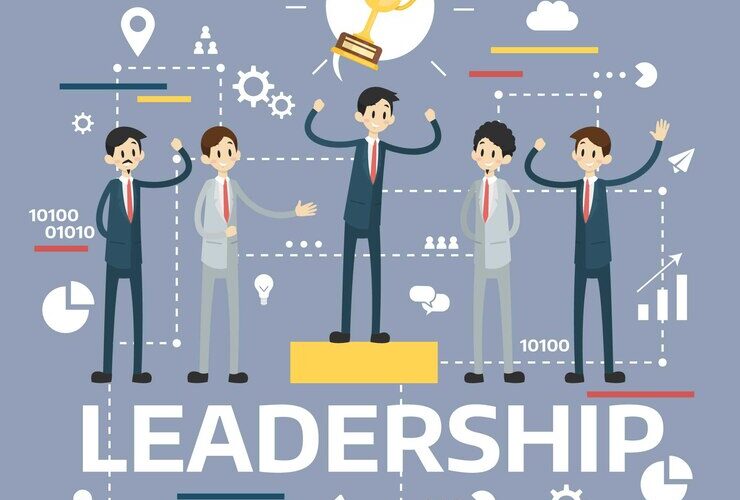Crafting a Winning Human Resources Strategy: A Blueprint for Success
Introduction
In today’s dynamic business landscape, human resources play a pivotal role in driving organizational success. Crafting a winning human resources strategy is not just a necessity; it’s a competitive advantage. From talent acquisition to employee engagement and retention, every aspect of HR strategy impacts the overall performance and growth trajectory of an organization. In this comprehensive guide, we delve into the intricacies of creating a robust HR blueprint that ensures not only the attraction and retention of top talent but also fosters a culture of innovation, collaboration, and employee well-being.
Understanding the Importance of HR Strategy
In the realm of modern business, the HR blueprint is akin to a roadmap that guides the organization towards its goals and objectives. A well-crafted HR strategy aligns human capital with business objectives, fostering synergy and maximizing efficiency. It serves as a framework for talent management, organizational development, and succession planning, ensuring that the right people are in the right roles at the right time.
Defining Your HR Objectives
Before embarking on the journey of crafting a winning HR strategy, it’s imperative to define clear and concise objectives. These objectives should be SMART—Specific, Measurable, Achievable, Relevant, and Time-bound. Whether it’s reducing employee turnover, enhancing employee engagement, or fostering diversity and inclusion, clearly articulated objectives provide direction and purpose to your HR initiatives.
Analyzing Current HR Practices
To formulate an effective HR strategy, it’s essential to conduct a comprehensive analysis of your current HR practices. This involves evaluating recruitment processes, performance management systems, training and development initiatives, compensation and benefits structures, and employee relations policies. Identifying strengths, weaknesses, opportunities, and threats allows you to leverage existing resources while addressing areas that require improvement.
Developing a Talent Acquisition Strategy
Attracting and retaining top talent is the cornerstone of any successful HR strategy. A robust talent acquisition strategy encompasses sourcing strategies, recruitment channels, employer branding efforts, and candidate assessment methodologies. Leveraging technology, social media platforms, and professional networks can expand the talent pool while ensuring a seamless and engaging candidate experience.
Fostering Employee Engagement and Retention
Employee engagement is not merely a buzzword; it’s a catalyst for organizational success. A culture of engagement fosters productivity, creativity, and loyalty among employees. Implementing initiatives such as employee recognition programs, flexible work arrangements, professional development opportunities, and open communication channels can enhance employee satisfaction and retention.
Promoting Diversity and Inclusion
Diversity and inclusion are not just moral imperatives; they’re business imperatives. A diverse workforce brings together a variety of perspectives, experiences, and ideas, driving innovation and creativity. Establishing diversity and inclusion initiatives, unconscious bias training programs, and affinity groups creates a supportive and inclusive work environment where every employee feels valued and respected.
Implementing Performance Management Systems
Effective performance management is essential for aligning individual goals with organizational objectives. Implementing performance management systems involves setting clear expectations, providing regular feedback and coaching, conducting objective evaluations, and recognizing and rewarding achievements. By fostering a culture of continuous improvement and accountability, performance management systems drive employee development and organizational excellence.
Enhancing Learning and Development Initiatives
Investing in employee development is investing in the future of your organization. Learning and development initiatives encompass training programs, skill development workshops, mentoring relationships, and leadership development programs. By empowering employees to acquire new skills and competencies, organizations cultivate a culture of growth, adaptability, and innovation.
Ensuring Compliance and Risk Management
Navigating the complex landscape of employment laws and regulations requires proactive compliance and risk management strategies. HR professionals must stay abreast of legislative changes, industry standards, and best practices to mitigate risks and ensure legal compliance. From wage and hour regulations to workplace safety standards, adherence to ethical and legal guidelines is paramount.
Leveraging Technology and Data Analytics
In the digital age, HR professionals have access to a wealth of data and technology-driven solutions that streamline processes and enhance decision-making. Leveraging HRIS (Human Resources Information Systems), AI-powered recruitment tools, and people analytics platforms enables organizations to make data-driven HR decisions, identify trends and patterns, and forecast future workforce needs.
The HR Blueprint: Crafting a Winning Human Resources Strategy
Crafting a winning human resources strategy requires a multifaceted approach that encompasses talent acquisition, employee engagement, diversity and inclusion, performance management, learning and development, compliance, and technology integration. By aligning HR initiatives with organizational goals and fostering a culture of excellence, organizations can achieve sustainable growth, competitive advantage, and employee satisfaction.

Frequently Asked Questions
How can I develop a compelling employer brand?
Developing a compelling employer brand involves showcasing your organization’s values, culture, and opportunities for growth. Leverage social media, employee testimonials, and employer review sites to communicate your employer brand effectively.
What are the key components of an effective onboarding process?
An effective onboarding process should be comprehensive, personalized, and engaging. It should include orientation sessions, introductions to key team members, access to necessary tools and resources, and ongoing support and feedback.
How can I measure the success of my HR initiatives?
Measuring the success of HR initiatives requires setting clear KPIs (Key Performance Indicators) aligned with organizational goals. Track metrics such as employee turnover rates, employee satisfaction scores, time-to-fill vacancies, and training effectiveness to evaluate the impact of your initiatives.
What role does HR play in organizational culture?
HR plays a pivotal role in shaping organizational culture by designing policies, programs, and initiatives that promote values such as collaboration, respect, integrity, and innovation. By fostering a positive and inclusive culture, HR contributes to employee engagement, retention, and overall organizational success.
How can I address workplace diversity and inclusion challenges?
Addressing workplace diversity and inclusion challenges requires a proactive and systematic approach. Conduct diversity training, establish diversity and inclusion councils, implement bias-mitigation strategies, and foster open dialogue and cultural competence among employees.
What are the emerging trends in HR technology?
Emerging trends in HR technology include AI-powered recruitment tools, predictive analytics for workforce planning, virtual reality-based training solutions, and blockchain for secure employee data management. By embracing these technologies, organizations can enhance efficiency, accuracy, and employee experience.
Conclusion
Crafting a winning human resources strategy is not a one-size-fits-all endeavor; it requires careful planning, execution, and continuous improvement. By prioritizing talent acquisition, employee engagement, diversity and inclusion, performance management, learning and development, compliance, and technology integration, organizations can build a resilient and agile workforce that drives sustainable growth and competitive advantage.




